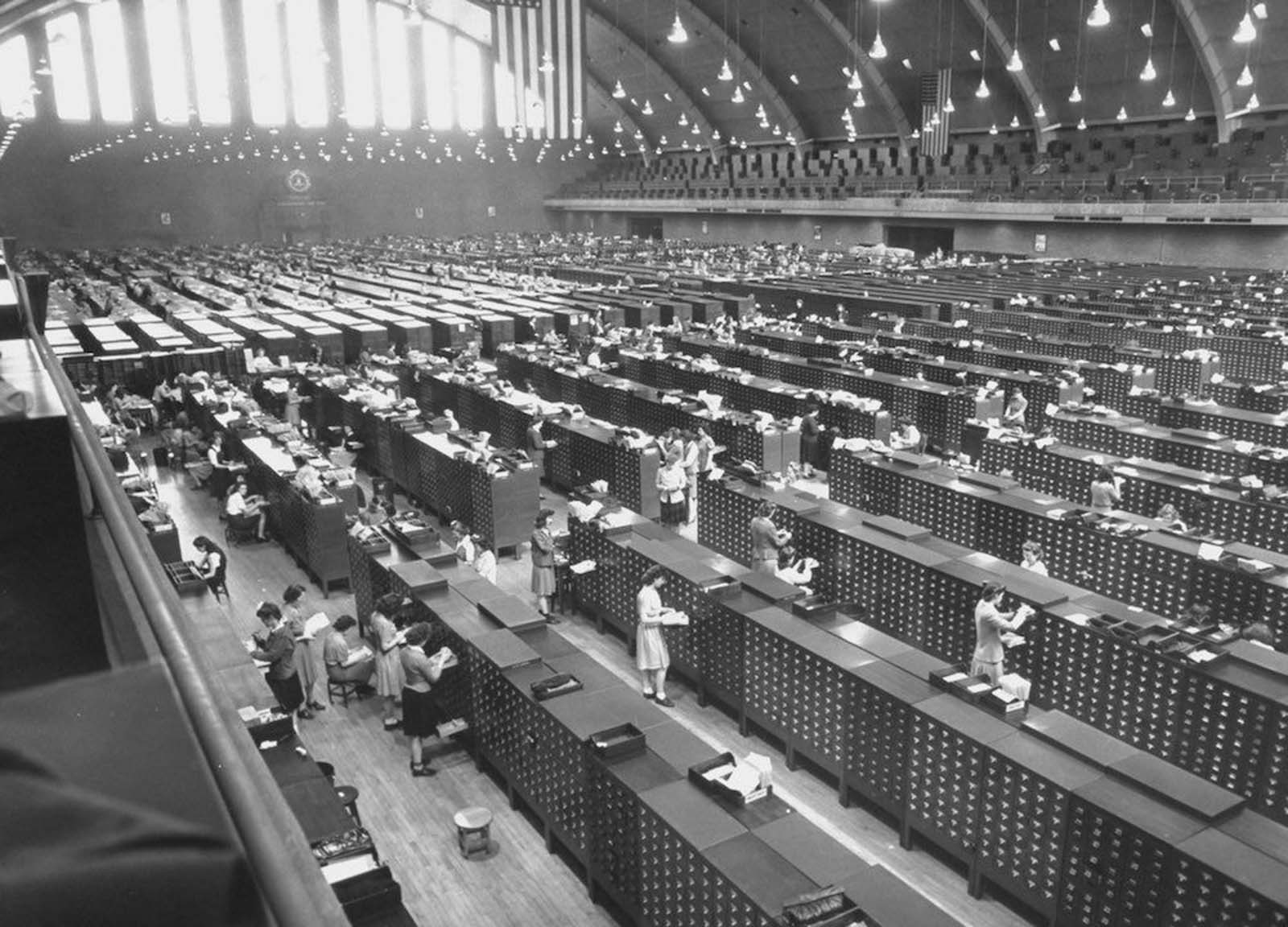
The fingerprint files of FBI, 1944.
These photos picture the overflow filling facility that the FBI’s Identification Division started using during World War II for the purposes of clearance needs of the armed services. The building is the DC Armory, a multi-use arena facility — and sometimes ice rink — which is still in existence.
By 1942 the FBI was adding 400,000 file cards a month to its archives, and was receiving 110,000 requests for “name checks” per month. By 1944 the agency contained some 23 million card records, as well as 10 million fingerprint records.
Around the war, the federal government invested huge resources into the FBI to investigate potential defectors and spies. President Roosevelt, for one, was concerned about the lure of Communism and the subsequent threat to democracy. By the end of 1943, the FBI employed around 13,000 people.
The French scientist Paul-Jean Coulier developed a method to transfer latent fingerprints on surfaces to paper using iodine fuming. It allowed the London Scotland Yard to start fingerprinting individuals and identify criminals using fingerprints in 1901.
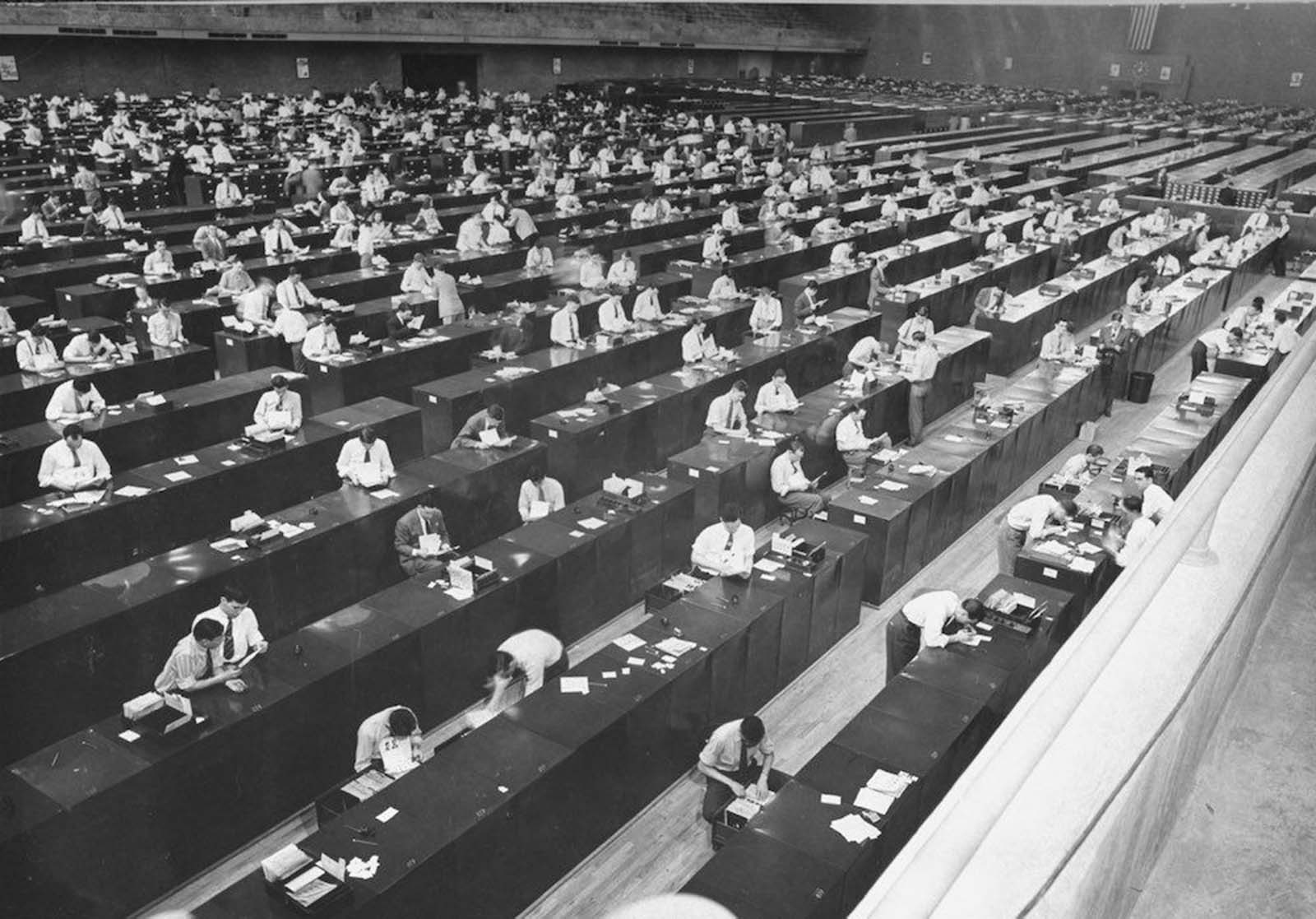
Filing doesn’t have to be dull. Here is the evidence — in more ways than one.
Soon after, American police departments adopted the same method and fingerprint identification became standard practice in the United States.
The Scheffer case of 1902 is the first case of the identification, arrest, and conviction of a murderer based upon fingerprint evidence. Alphonse Bertillon identified the thief and murderer Scheffer, who had previously been arrested and his fingerprints filed some months before, from the fingerprints found on a fractured glass showcase, after a theft in a dentist’s apartment where the dentist’s employee was found dead. It was able to be proved in court that the fingerprints had been made after the showcase was broken.
The identification of individuals through fingerprints for law enforcement has been considered essential in the United States since the beginning of the 20th century. Body identification using fingerprints has also been valuable in the aftermath of natural disasters and anthropogenic hazards.
Since 1924, the FBI has been the single U.S. repository for fingerprints. Computers were first installed to search these files in 1980. Since 1999, the FBI has stored and accessed its fingerprint database via the digital IAFIS (Integrated Automated Fingerprint Identification System), which currently holds the fingerprints and criminal records of over 51 million criminal record subjects and over 1.5 million civil (non-criminal) fingerprint records.
US Visit currently holds a repository of the fingerprints of over 50 million non-US citizens, primarily in the form of two-finger records.

The FBI’s fingerprint files called ‘Notorious Dead Criminals’.
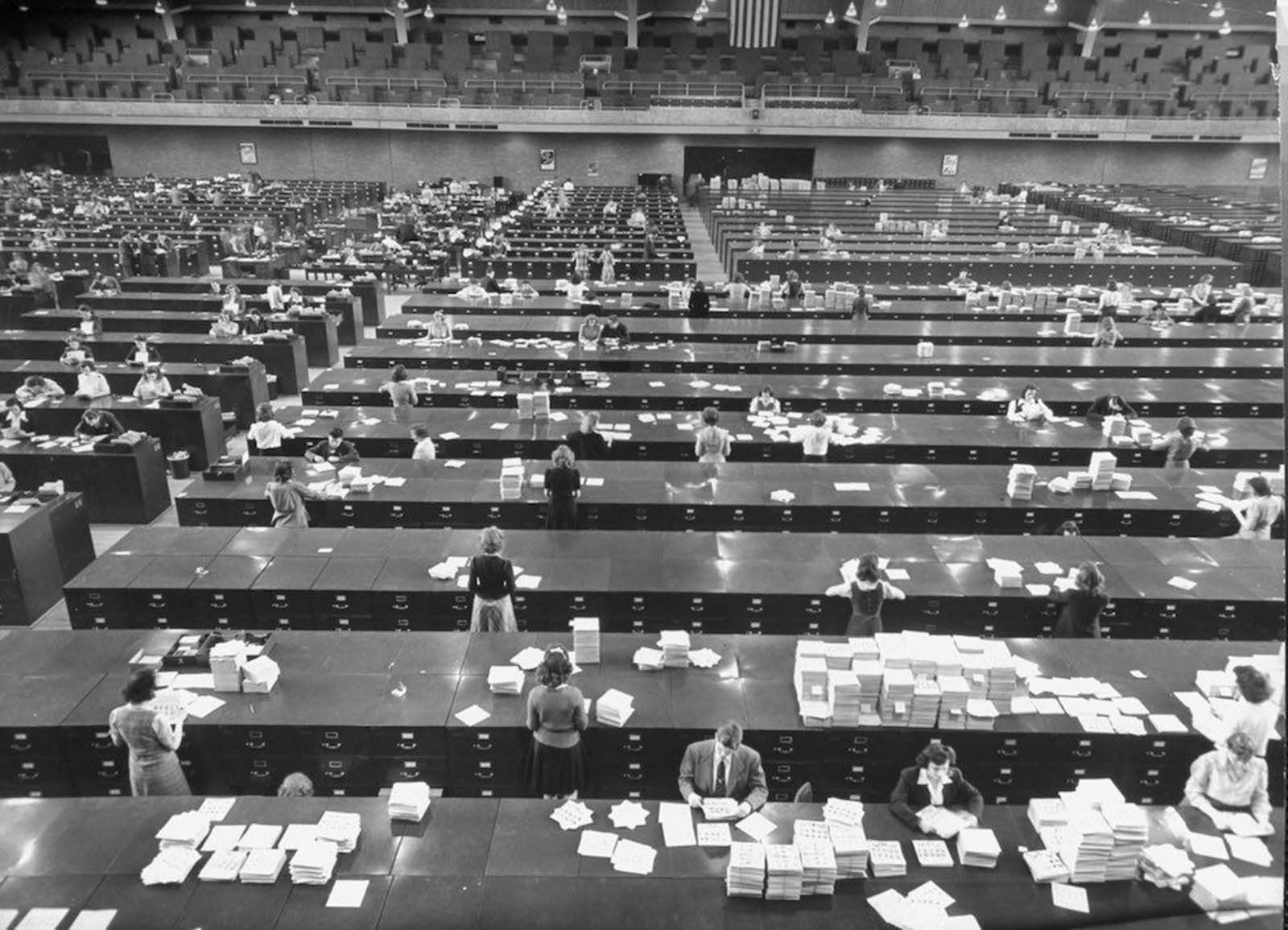
In 1924, an act of congress established the Identification Division of the FBI. The IACP’s National Bureau of Criminal Identification and the US Justice Department’s Bureau of Criminal Identification consolidated to form the nucleus of the FBI fingerprint files.
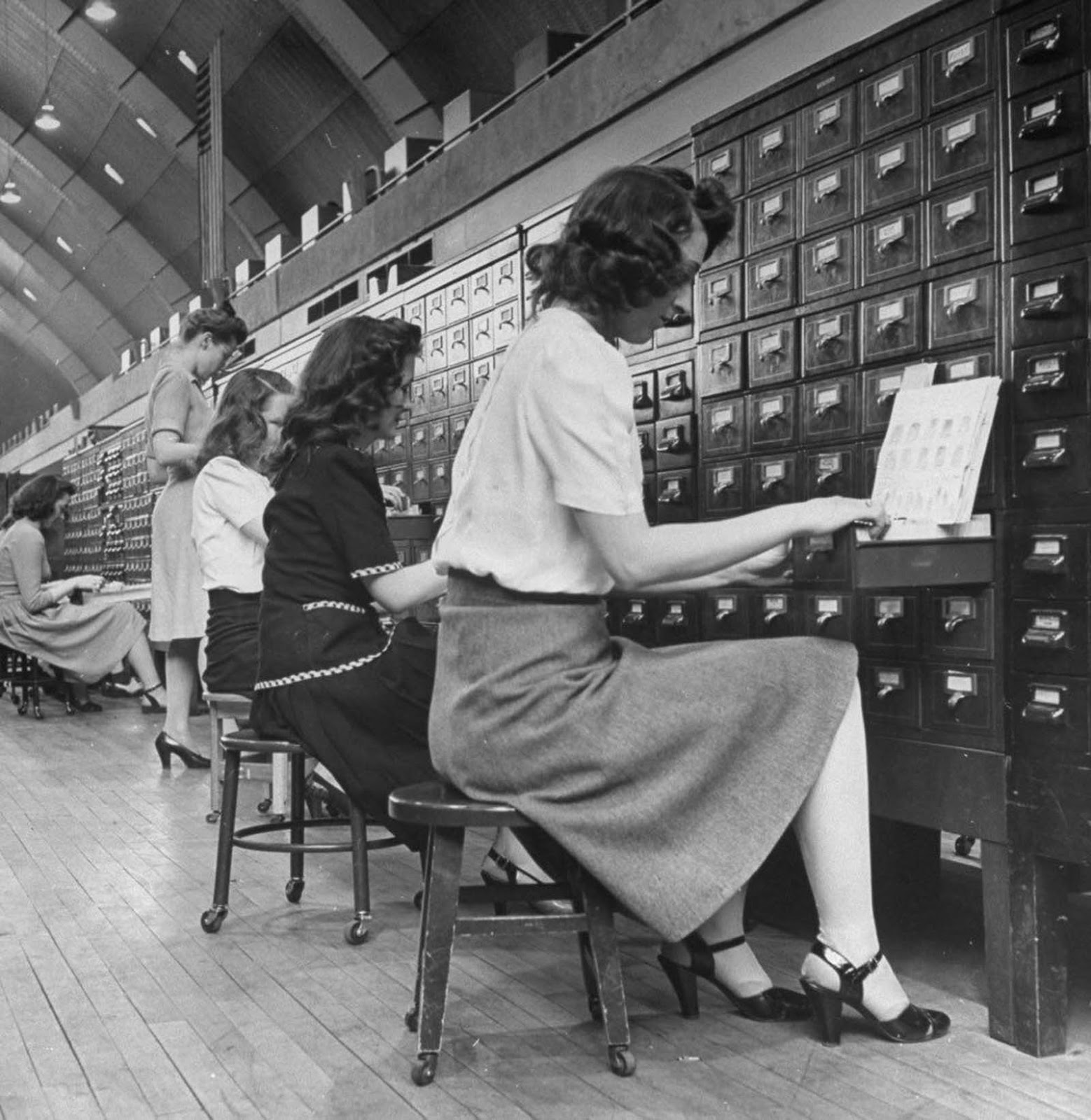
By 1946, the FBI had processed over 100 million fingerprint cards in manually maintained files; and by 1971, 200 million fingerprint cards.

An unidentified man takes a close look at the fingerprint card.

A place for every print, and every print in its place
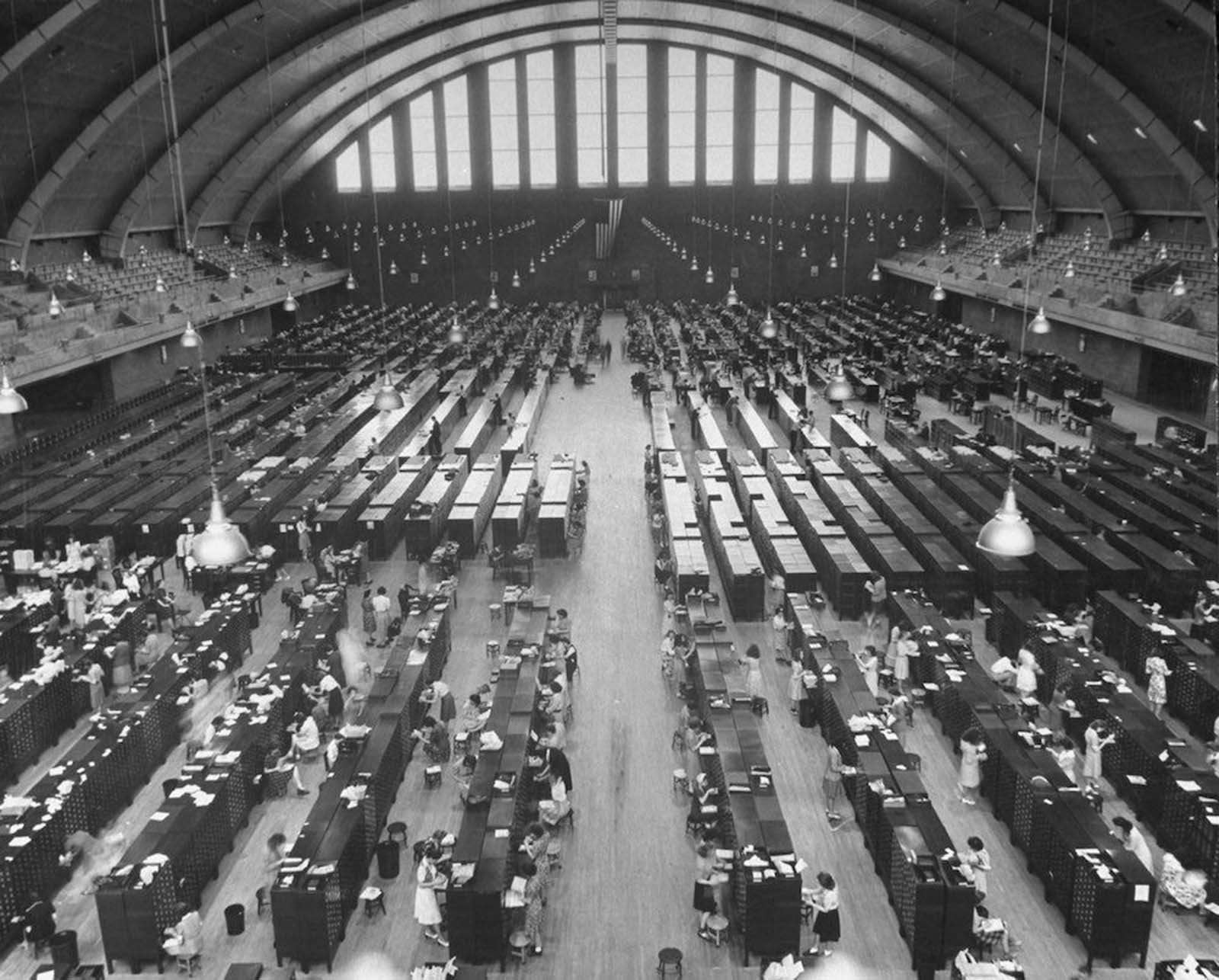
With its distinctive domed roof, the D.C. Armory opened in 1941 as the headquarters, armory and training facility for the D.C. National Guard.